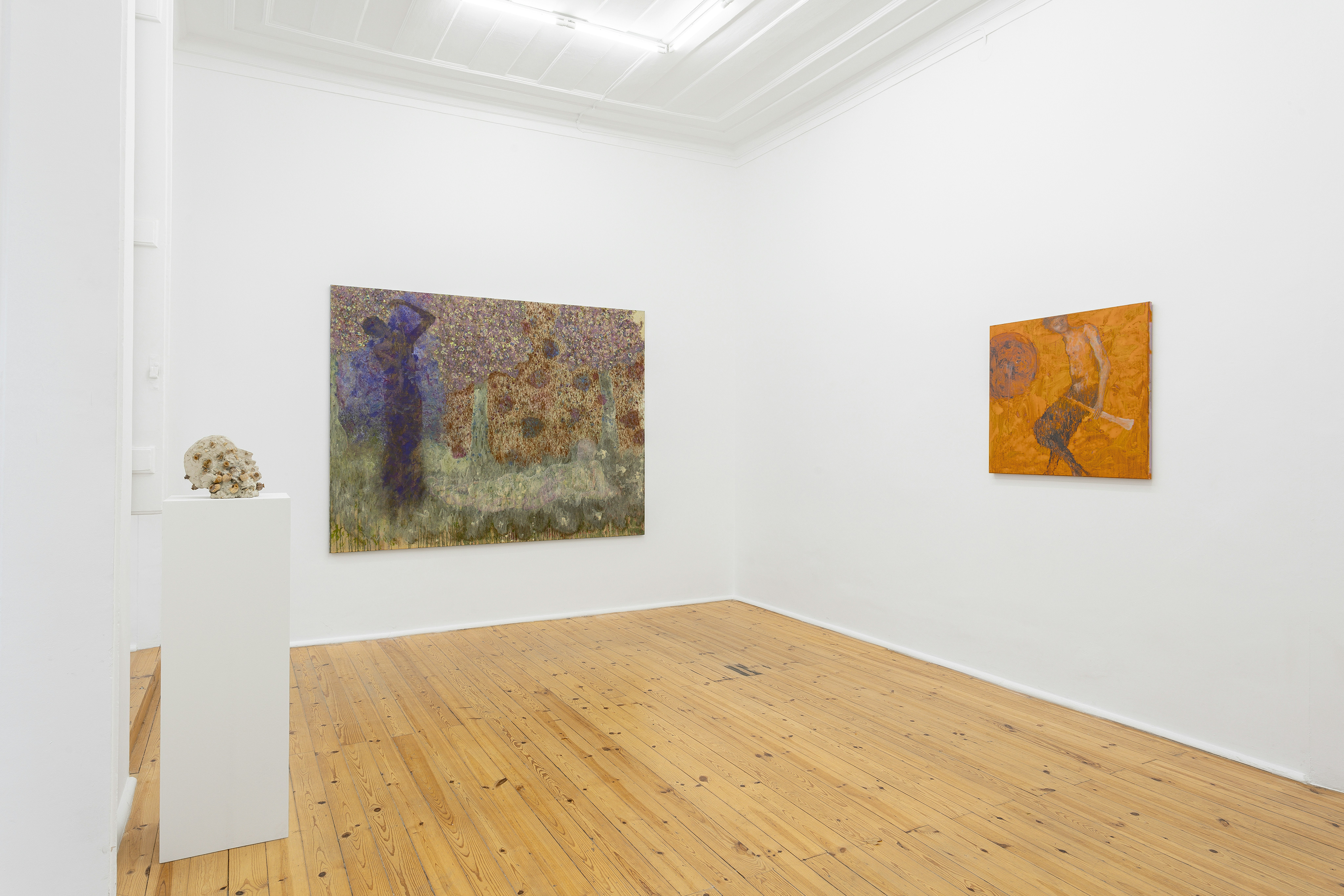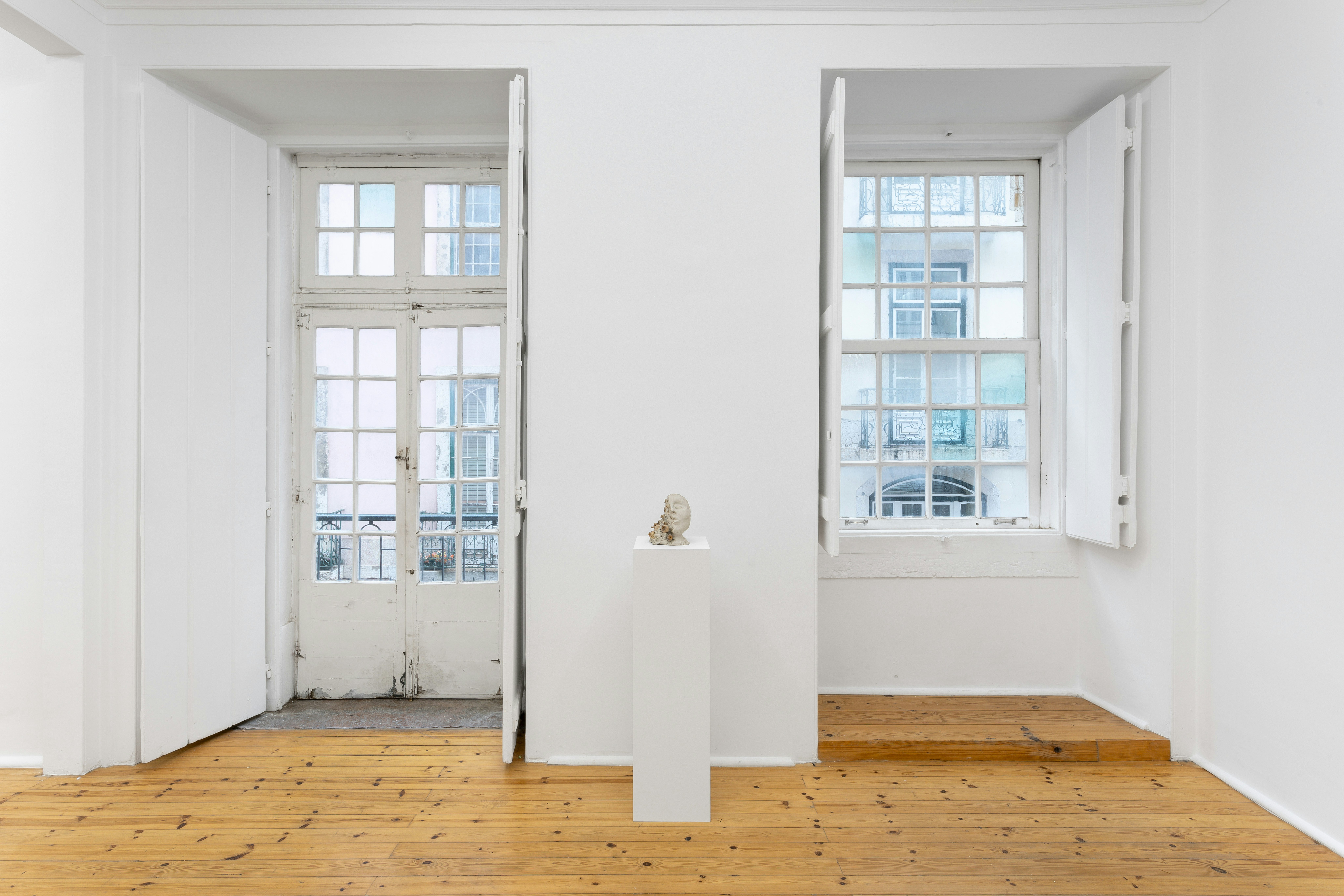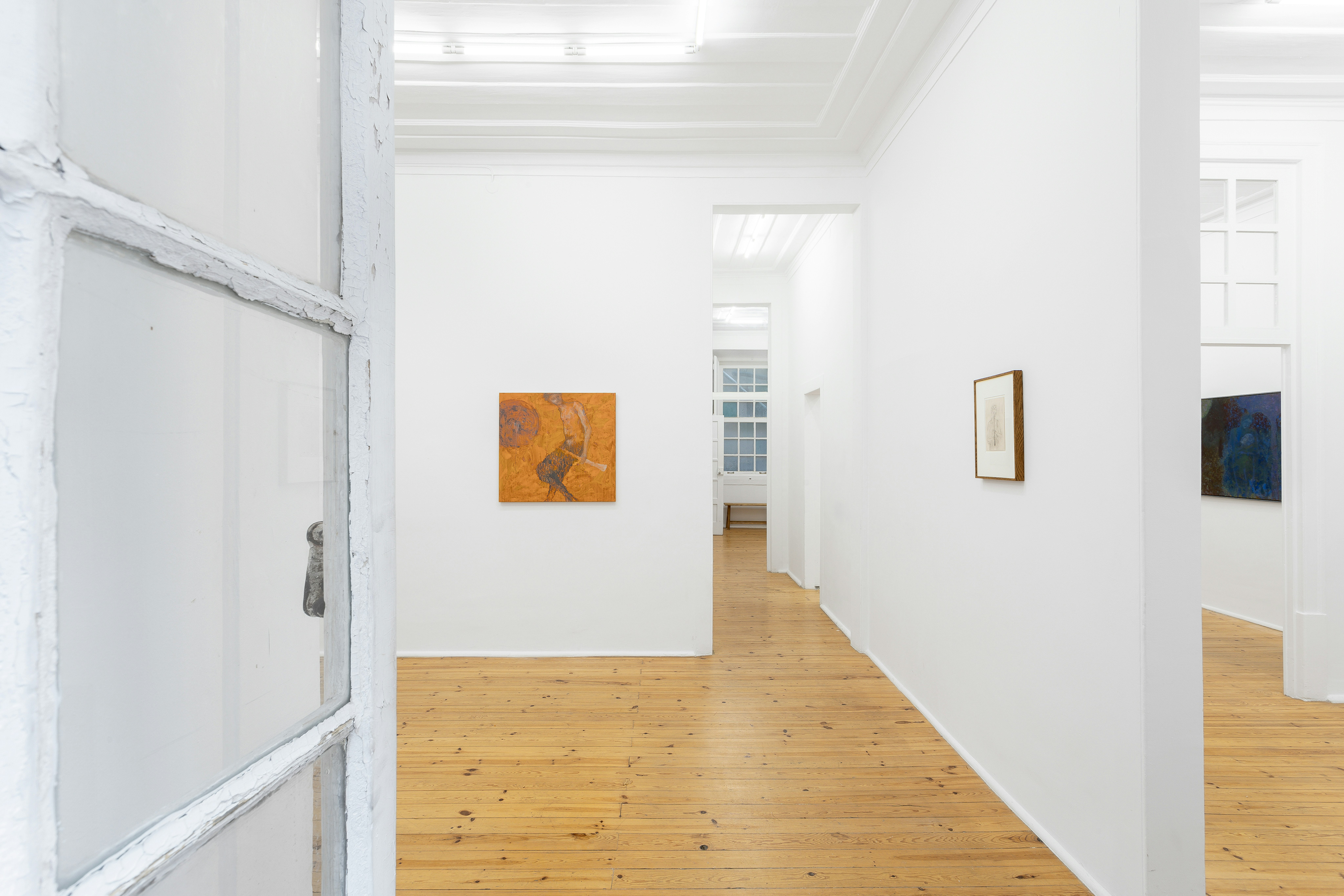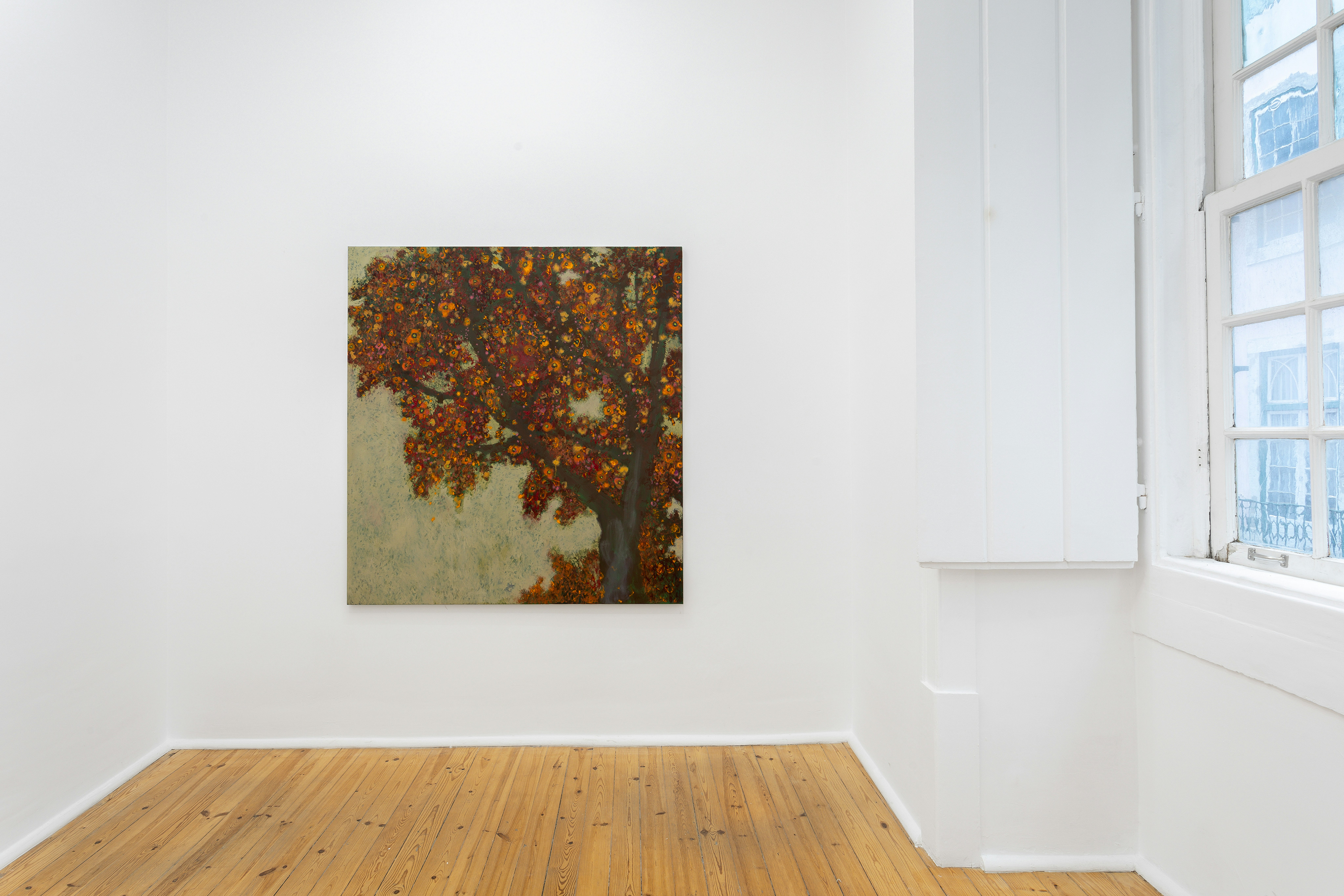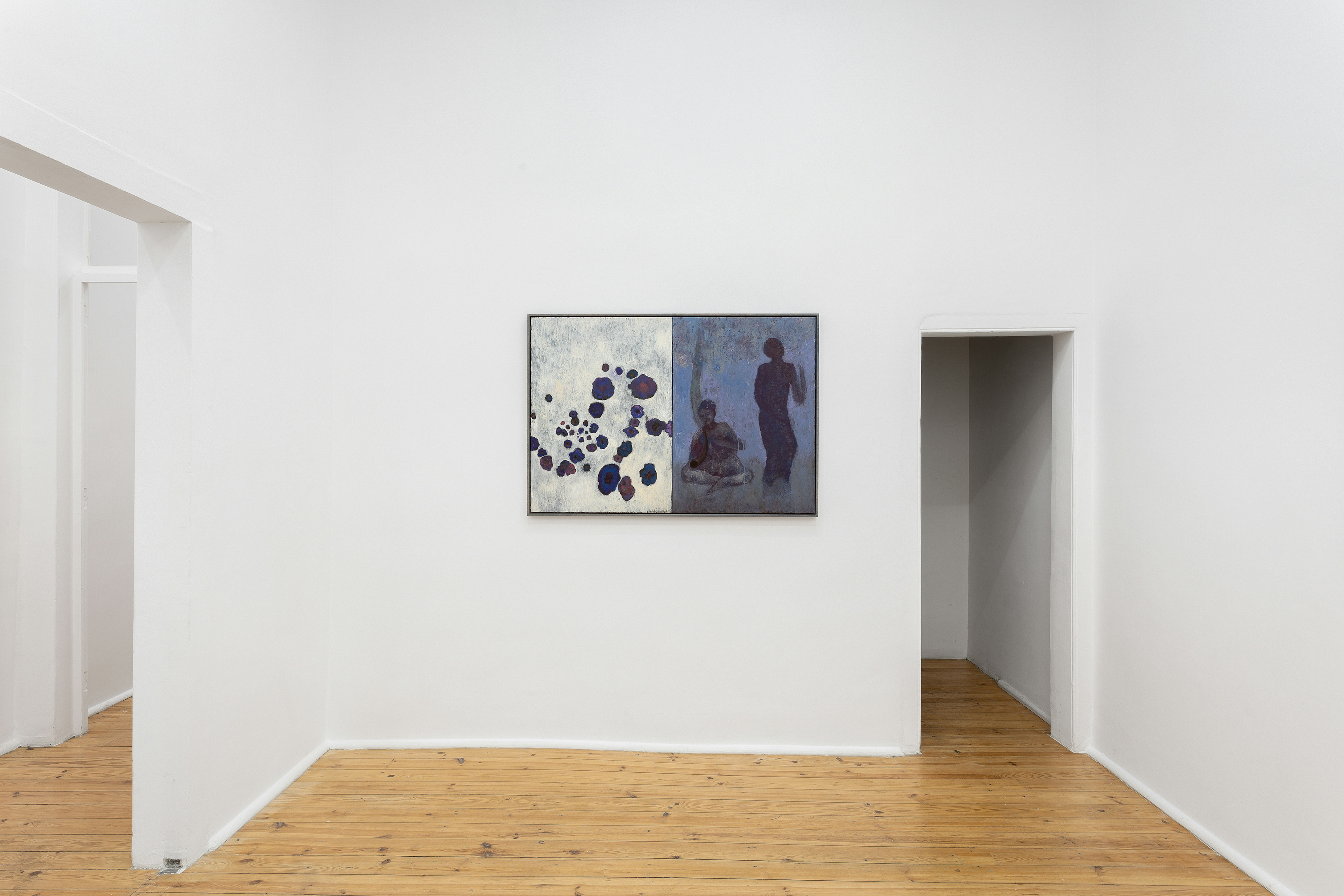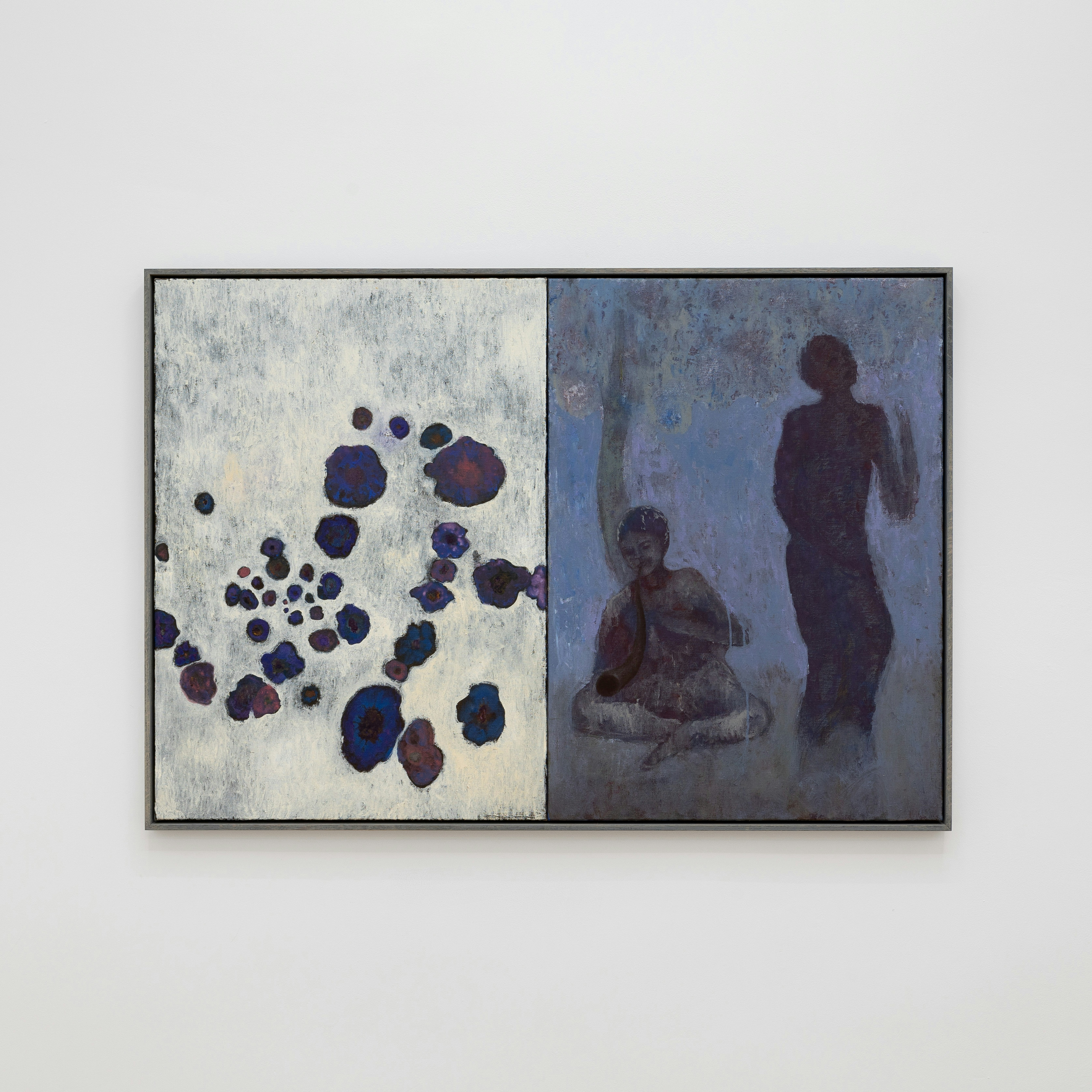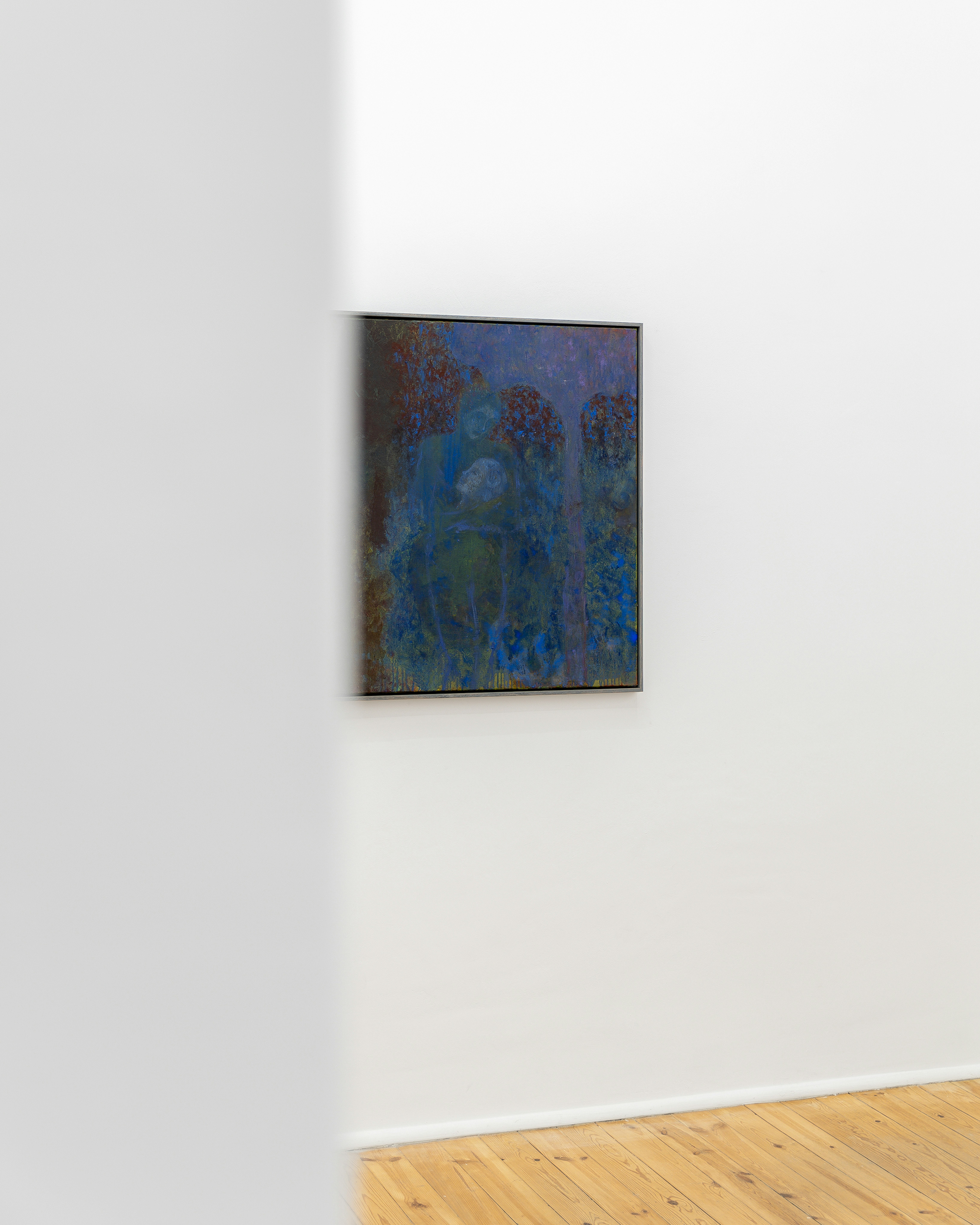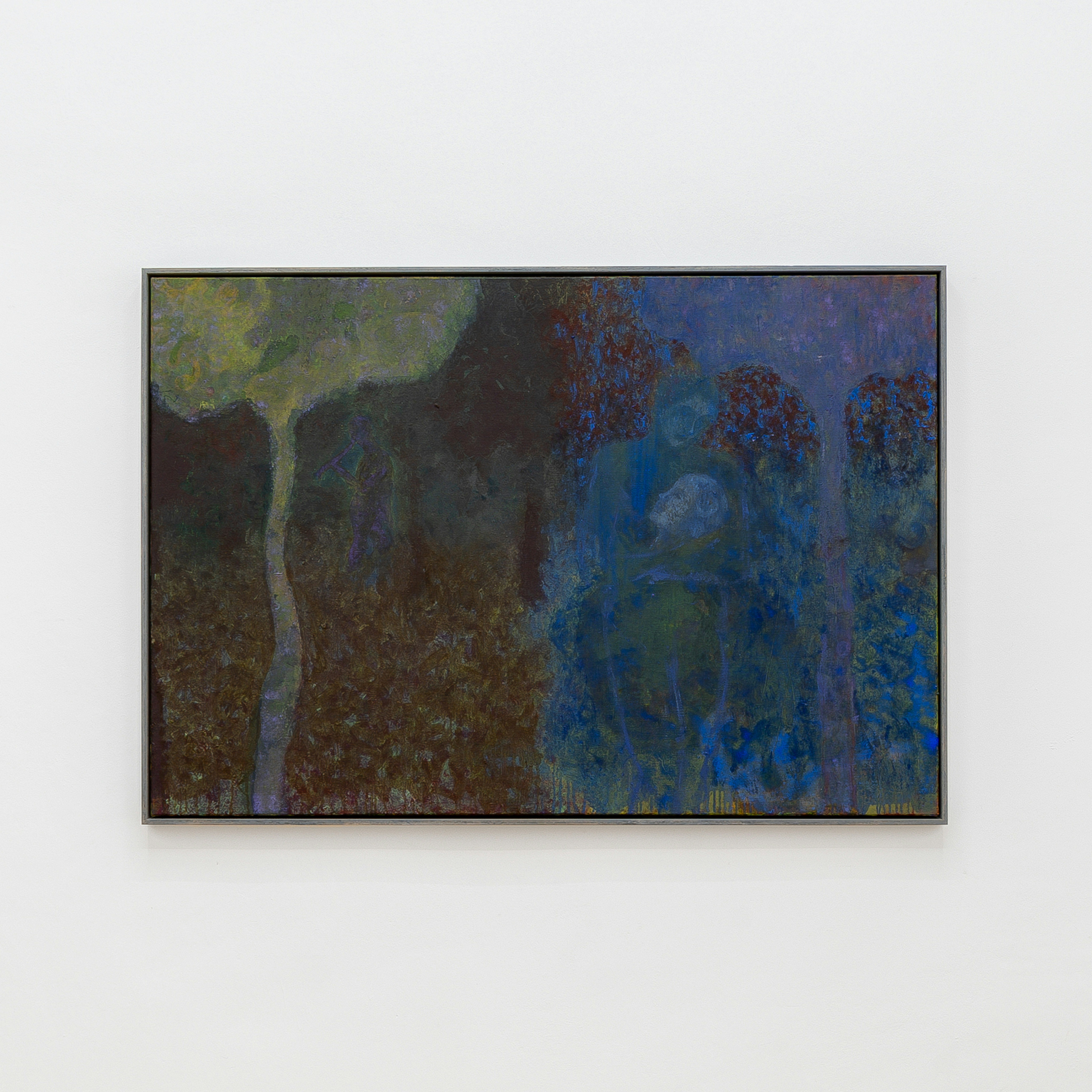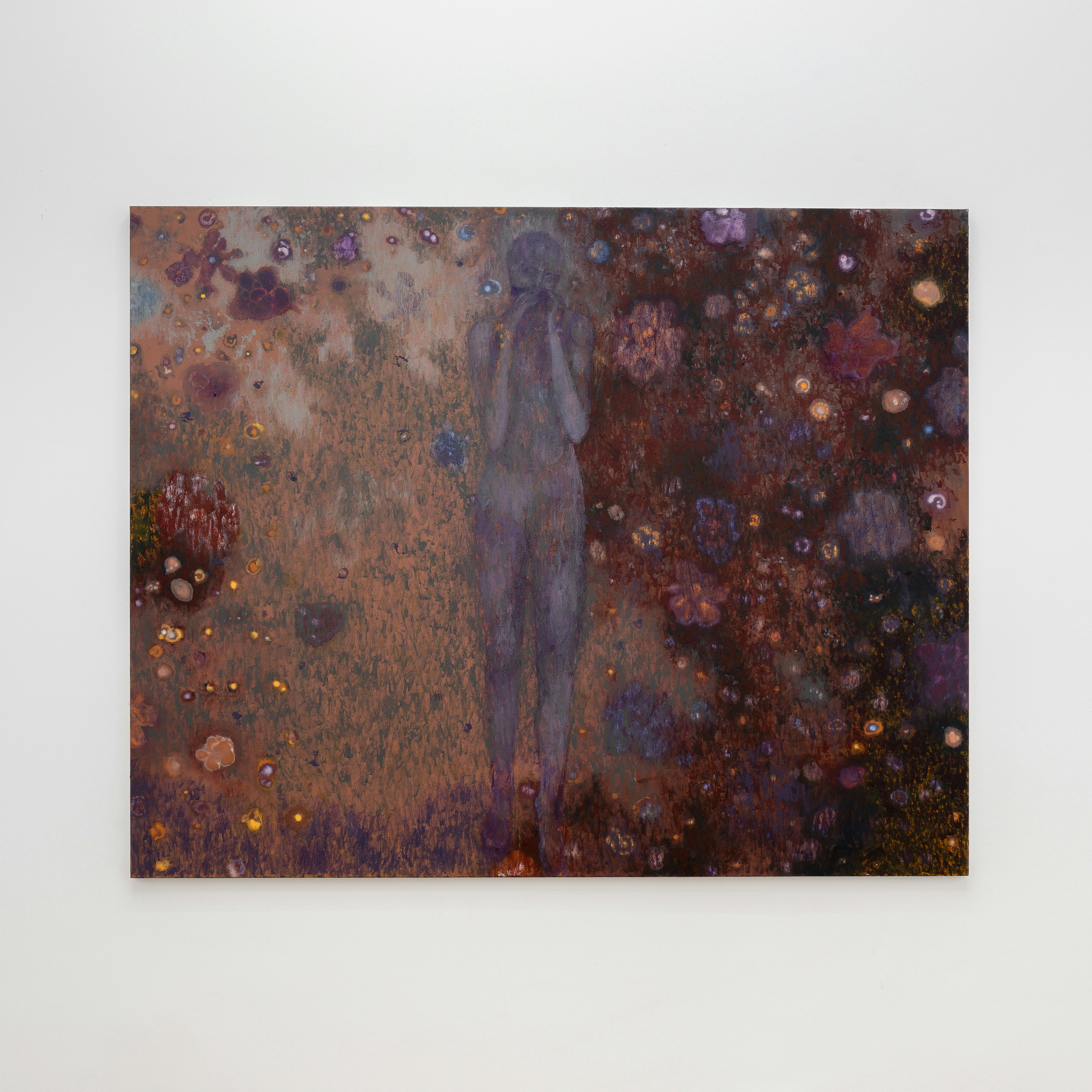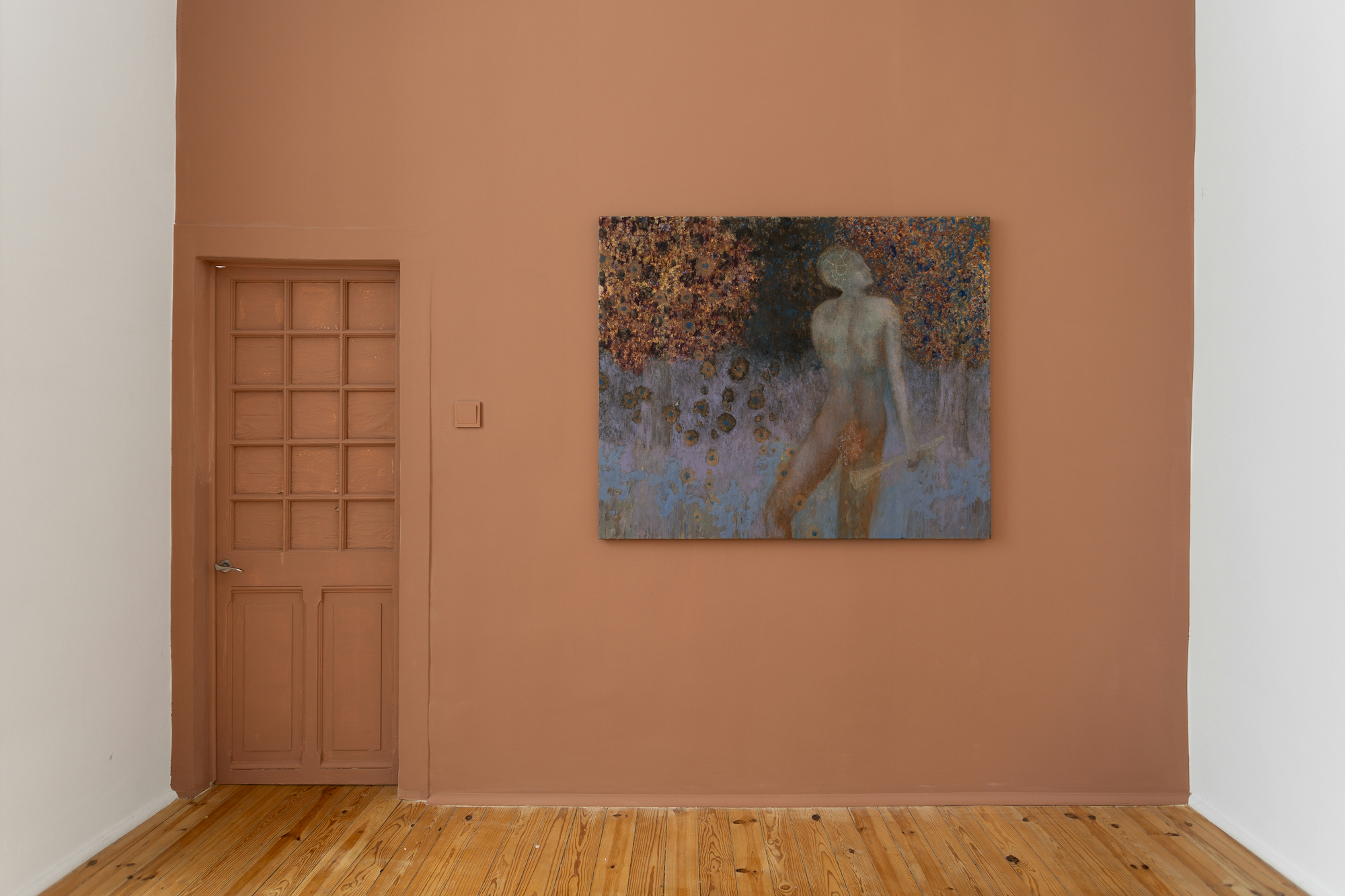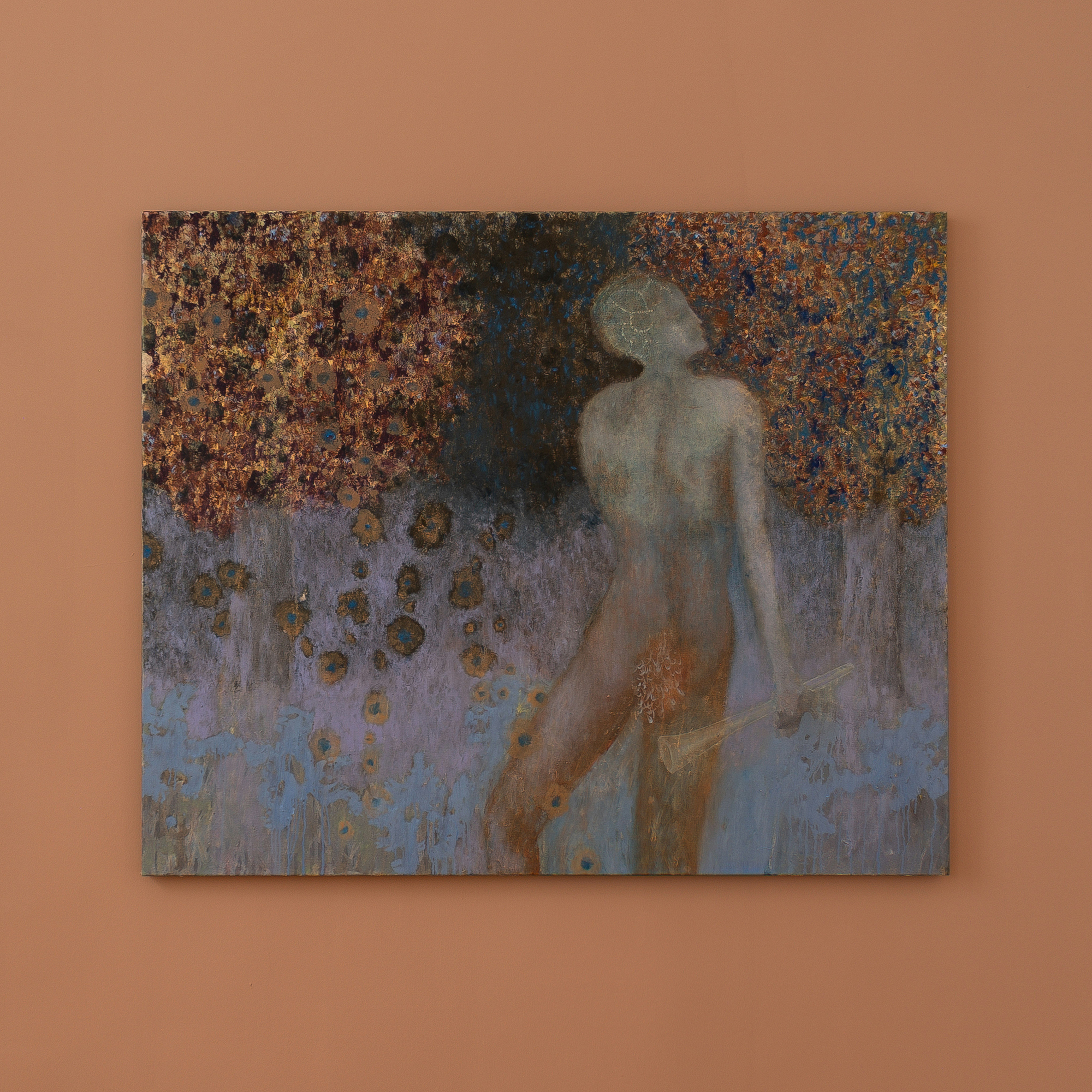ADZ
Rua do Crucifixo 28, First Floor, Lisboa
Wednesday–Saturday 11–5pm
info@adz.gallery
+351 932 989 202
Gallery Mailing List
Oliver Bak
Songs From Below the Meadows
Oliver Bak’s Songs from Below the Meadows is a painterly speculation on the classical categories of music and beauty, and the dionysian tension inherent within these. Taking imaginative departure from the allegorical, Bak’s works weave protean tapestries in which beauty and horror shift, imperceptibly.
Within the exhibition, the presence of mythological satyrs and their relationship to their utopian surroundings conceptually dictates the form of the works. Within bucolic scenes, spectral satyrs drift in and out of perception in verdant, canopied, and luminous landscapes. Posturing, reclining, revelling, or hiding in dense flora, there is an idle playfulness to them, but also an implication of a nymph-like changeability: their dual capacity for joyousness and cruelty.
In Romance and Horror, the silhouettes of two figures are loosely demarcated: one tall and dark, arms curled demonstratively above their head, the other supine, odalisque, and almost transparent, blending in with the foliage. Encircled by twisted trunks and an ever-present curtain of falling blossom, the figures take on a symbolic dualism, their feet lightly touching in a suggestion of interchangeability. Their inscrutability lends imaginative intrigue, intimating unknown and possibly malevolent intentions. Similarly, in By the River, three satyrs emerge from the shadows, barely indistinguishable from stygian forestry. Two embrace in a gesture of ennui; one prowls, delphic, playing a pipe in the distance. Structured symbiotically, Bak’s palette encases each in a halo of rich umbers and sombre blues. Their separation takes on a symbolic weight, suggesting a permeable veil between worlds, in which the satyrs roam freely.
In other works, such as Playing Ghost, and Satyr (Alteration of Titian), music emerges as a central organising principle. Both of the figures clutch pipes, the former private and forlorn, cast in feathery purple hues, the latter intrepid, facing a beckoning clearing in the trees. In both works, falling flora seem to give shape to imagined music ringing mutely from the canvas, implying the figures’ ability to shape their surroundings to their needs. Here, it seems less that the satyrs are moving through the landscape, and more that the foliage bends to their whims.
Present in all of the works is the thematic tension between Apollo and Dionysus which colours all Greek Tragedies - that of clarity, logic, and individualism, against disorder, intoxication, emotion and ecstasy. Combining enchantment and horror, playfulness and violence, the known and the unknown, Bak’s works seem to gestate upon unbridled beauty and its proximity to destruction.
Written by Lydia Earthy

